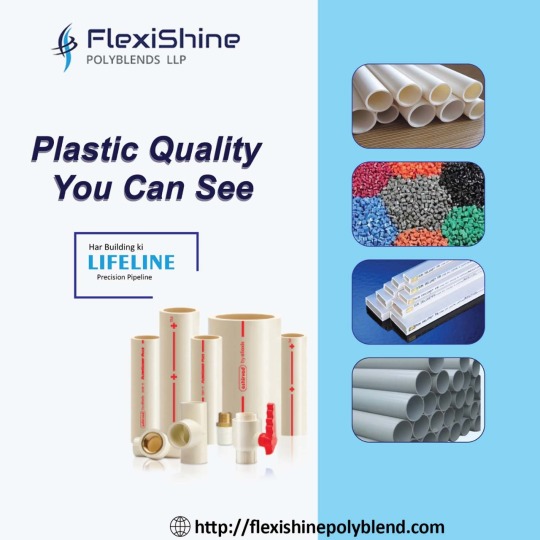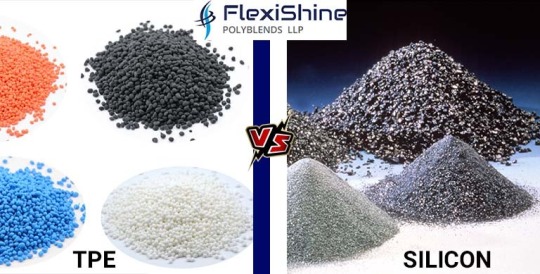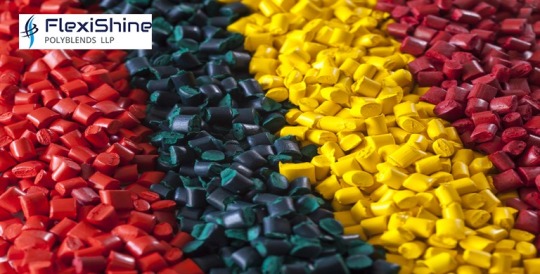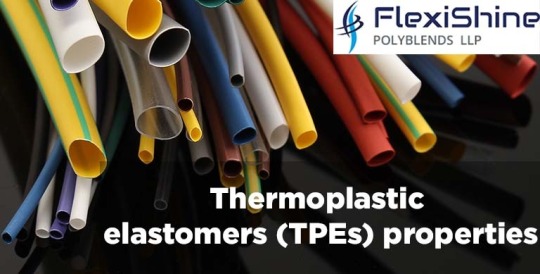Don't wanna be here? Send us removal request.
Photo

Flexishine is one of the best Polymer material Companies in India, exchanging full reach Natural Polymers. We have the differentiation of conveying in excess of 25,000 metric huge loads of ‘Plastic Raw Material’ for large as well as little plastic ventures all over India. Flexishine is one of the best company manufactures and suppliers of polymers in all over India. A polymer is a large molecule, or macromolecule, composed of many repeated subunits.
For more info - http://flexishinepolyblends.com/blog/best-polymer-materials-company-in-india/
0 notes
Photo

Plastic quality you can see here. Buy best plastic quality at Flexishine.
For enquiry: +91-98240-32406 +91-93774-82340
Visit our website for more - http://flexishinepolyblends.com/
1 note
·
View note
Link
Looking for Polymer material in India? Flexishine is one of the best Polymer material Companies in India, exchanging full reach Natural Polymers. Buy polymer at Flexishine. Large or small orders, best polymer supplier in Gandhinagar India.
http://flexishinepolyblends.com/blog/best-polymer-materials-company-in-india/
1 note
·
View note
Link
The main difference is that Silicone is a type of thermoset elastomer where as TPE is a type of thermoplastic elastomer silicon has a molecular structure of SI02, and TPE has a molecular structure of CC. Silicone generally feels a little harder, but TPE will be very soft.
1 note
·
View note
Photo

The main difference is that Silicone is a type of thermoset elastomer where as TPE is a type of thermoplastic elastomer silicon has a molecular structure of SI02, and TPE has a molecular structure of CC. Silicone generally feels a little harder, but TPE will be very soft.
http://flexishinepolyblends.com/blog/tpe-vs-silicon/
0 notes
Text
Best polymer company in india
Flexishine is one of the best Polymer material Companies in India, exchanging full reach Natural Polymers. We have the differentiation of conveying in excess of 25,000 metric huge loads of ‘Plastic Raw Material’ for large as well as little plastic ventures all over India.
Looking for Polymer material in India? Flexishine is well known for its Polymers trading business. We trade in premium quality Plastic Raw Materials.
0 notes
Text
Difference between Tpe and Silicon
The main difference is that Silicone is a type of thermoset elastomer where as TPE is a type of thermoplastic elastomer silicon has a molecular structure of SI02, and TPE has a molecular structure of CC. Silicone generally feels a little harder, but TPE will be very soft.
#tpe#silicon#pvc#polymers#thermoplastic#tpevssilicon#tpevstpv#typesoftpe#besttpe#thermoplasticelastomers
0 notes
Text
Tpe vs silicon
Difference between Thermoplastic elastomers (Tpe) and silicon
TPE is a general term of a variety of elastomeric materials with the characteristics of elastic rubber and melt-flowable elastomer at high temperature. Silicone rubber is a special kind of rubber. The main difference is that silicon has a molecular structure of SI02, and TPE has a molecular structure of CC.
The main difference between tpe and silicon is-
I. Silicone is a type of thermoset elastomer. II. TPE is a type of thermoplastic elastomer.
TPE is an overall term of an assortment of elastomeric materials with the qualities of versatile elastic and dissolve flowable elastomer at high temperature. Silicone elastic is an extraordinary sort of elastic. It has great mechanical strength, scraped spot opposition and high temperature obstruction in the wake of being crosslinked. It has a place with a sort of thermoset elastic, won’t soften subsequent to being vulcanized and warmed, will consume when the temperature is unnecessarily high, and will yield water and silica after complete burning.
Different underlying investigation: Silicone is an elastomer made out of a chain of silicon-oxygen joins, and with an overall side chain of CH3. TPE is a thermoplastic elastomer made out of styrene, olefins and polyurethanes. The principle distinction is that silicon has an atomic design of SI02, and TPE has a sub-atomic construction of CC.
According to handling execution viewpoint: Silicone should be shaped through vulcanization, however TPE can be formed without vulcanization. Silicone is more hard to be handled and formed, while the creation and handling of TPE is less difficult.
Silicone enjoys an upper hand over TPE in high temperature. The temperature obstruction scope of silicone is 200 ~ 300 ºC, while that of TPE is hypothetically 130ºC ~ 150 ºC, or more that reach, TPE will age and break.
Costs of silicone elastic are higher than TPE. TPE enjoys a benefit of being less expensive. Aside from unique TPE materials, silicon has such merits as without halogen, fire resistant, food-grade appropriate, and so forth
According to cost viewpoint, silicone squanders can’t be reused, while TPE squanders, spout deposits and edge materials can be completely reused and reused. In this manner, TPE is more savvy.
Get in touch
Flexishine Polyblends LLP Tal,Kalol, Gandhi Nagar – 382721 +91 93774 82340
http://flexishinepolyblends.com/blog/what-is-tpe-and-their-properties-how-it-differs-from-silicon/
0 notes
Text
Thermoplastic elastomers properties-
Thermoplastic elastomers (TPEs) properties
Thermoplastic elastomers (TPE), at times alluded to as thermoplastic rubbers (TPR), are either mixes of at least two polymers or extraordinary sorts of square copolymers. These elastomers consolidate the presentation advantages of elastic with the simple processability of thermoplastics, yet are more flexible than one or the other material. Most of thermoplastic elastomers are block-copolymers in light of versatile and inflexible squares. TPEs are generally diblock copolymers (AB) with one limiting and one adaptable square or they are triblock copolymers (ABA) with a hard section at every polymer end of the elastomer. Different sorts incorporate stretched and star-molded (A-B)n types and mixes of these kinds. The versatile squares have commonly a lot higher sub-atomic load than the hard and inflexible squares. The last self-agglomerate to lustrous or translucent limiting spaces that capacity as physical crosslinks which forestall plastic distortion yet take into account versatile misshapening of the nebulous adaptable squares. Both the hard and delicate spaces add to the mechanical and actual properties of the thermoplastic elastomer. The flexible square ought to have a high atomic weight and every one of different qualities expected of a normal elastic though the hard block(s) ought to have a low sub-atomic load to limit their adverse consequence on versatility. Whenever these materials are cooled from the dissolve, the hard squares self-collect into little glasslike or shiny areas (physical crosslinks) that oppose creep and thick stream under load while the flexible piece of the polymer stays nebulous and delicate.
TPEs can be formed to display a wide scope of physical and mechanical properties impossible by an elastic or plastic alone. The hard spaces give plastic properties like high-temperature execution, thermoplastic processability, as well as great pliable and tear strength though the rubbery stage gives the elastomeric properties like low-temperature execution, durometer hardness (protection from space), adaptability as well as pressure and strain set. Like normal thermoplastics, TPEs can be handled on traditional, high-volume infusion trim and expulsion gear. The absence of compound crosslinks in TPEs, notwithstanding, brings about a few significant impediments; since TPEs liquefy or relax when the temperature arrives at the dissolving or mellowing point of the hard stage, they are unsatisfactory for applications requiring even transient openness to temperatures over their softening/mellowing point. As such, the supporting activity of the hard stage disappears over its conditioning point and the TPE acts like a thick fluid. Besides, at high expansions and when under pressure for longer times, TPEs go through long-lasting disfigurement because of thick stream. This twisting is known as creep. Synthetic cross-connecting, then again, smothers gooey stream. Notwithstanding, cross-connected elastomers can’t be liquid and along these lines can’t be gone back over and reusing is substantially more testing. The shortfall of crosslinks additionally brings about significantly more enlarging when the TPO is drenched in a non-polar dissolvable or presented to dissolvable fume.
What are thermoplastic elastomers used for? TPEs are used in a variety of applications in the automotive, medical, construction, electrical, appliance, packaging and industrial markets – and new uses for TPEs are being developed all the time.
What are the main properties of elastomers?
Temperature. …
Hardness. …
Compression set. …
Tensile Strength. …
Elongation at break. …
Tear strength. …
Gas permeability. …
Abrasion.
Properties of thermoplastic elastomers
Phase structure
Thermoplastic elastomers are basically stage isolated frameworks. A TPE is a biphasic material at its strong state; with a hard-glasslike space, and a delicate formless area. These stages are fortified artificially by square or join polymerisation [2].
The hard stage adds to the strength, substance obstruction and actual cross-connecting of TPEs. It gives the material plastic properties, for example, [1]:
Thermoplastic processability
High rigidity
High tear obstruction
Then again, the delicate period of TPEs offers elastomeric properties, for example,
High hardness
Slip resistance
Adaptability
Shock assimilation
Pressure resistance
Flow behaviour
Thermoplastic elastomers are by and large made by liquefying processes like plastics that generally depend on the progression of softened material at expanded temperatures. Rheology, or the investigation of material stream, is fundamental in the progress of handling TPEs. The rheology of TPEs is mind boggling because of the dissolve consistency’s reliance on temperature and shear rate. Thermoplastic elastomers are non-Newtonian, with high viscosities because of their long polymer chain structures [1].
Thermoplastic elastomers are for the most part handled through softening methods like plastics. A portion of these dissolving processes incorporate, yet are not restricted to:
Infusion forming
Expulsion
Blow forming
Rotational coating
Ongoing techniques have investigated the utilization of TPEs as adaptable fiber materials in added substance fabricating that permits makers to create perplexing and cutting edge plans.
Shrinkage
TPEs are compressible; and when cooled, they regularly shrivel. Project molds for thermoplastic elastomers are intended to be correspondingly bigger, fully expecting the contracting and distorting. Sometimes, TPEs might require fillers, stabilizers, or fortifications to make up for the shrinkage [3].
Thermoplastic elastomer material creation Every one of the thermoplastic elastomer classes is either mixed precisely or through unique vulcanisation.
Mechanical blend
As on account of Polyolefin TPE, the mix is arranged precisely, blending the hard polymer to the elastomer on high-shear intensifying gear or a constant blender. The viscosities of the two materials should be matched at the temperature and shear pace of blending. The extent and dissolvability boundaries of the two materials should be considered in mixing [1].
Powerfully vulcanized mix
In powerfully vulcanized mixes, the elastomeric stage is irregular and cross-connected. This is finished by to some degree vulcanising the delicate elastomer stage at a high shear rate and a raised temperature over the softening mark of the thermoplastic to initiate and finish the vulcanisation. The similarity of the material, molecule size, and level of fix are a boundaries that should be viewed as to accomplish ideal properties [4].
What are thermoplastic elastomers utilized for?
Auto The car business is the biggest fragment – at almost 40% application share – that uses TPE materials. Automobile makers need solid versatile materials that are fit for enduring, high temperatures, as well as compound and scraped area obstruction. TPEs are a superb answer for some parts, for example, shock-retaining seals, guard stops, vibration dampeners and other climate stripping components [1].
Buyer merchandise Following the auto business, with regards to volumetric utilization of TPEs, is the purchaser products area. TPEs are found in numerous items, for example, footwear bottoms, apparatuses, athletic gear and recreation merchandise.
Development TPEs are broadly utilized in the development business across numerous applications, for example, an added substance material in asphalting streets, electrical wiring protections and in glues, sealants and coatings [1].
Clinical The biocompatibility of TPEs mean the materials can be utilized in the clinical business in a scope of utilizations. You can peruse more about their purposes here: Thermoplastic Elastomers for Medical Applications
Sources [1] J.G. Drobny, 2014, Handbook of Thermoplastic Elastomers, Elsevier
[2] R.J. Spontak, N.P. Patel, 2000, “Thermoplastic elastomers: essentials and applications.” Current Opinion in Colloid and Interface Science, 5, pp. 333-40.
[3] “Thermoplastic Elastomer (TPE) FAQS,” n.d., from: https://www.polyone.com/items/thermoplastic-elastomers/tpe-information focus/tpe-faqs
[4] S. Abdou-Sabet, R. C. Puydak, C. P. Rader, 1996, “Powerfully Vulcanized Thermoplastic Elastomers.” Rubber Chemistry and Technology, 69, no. 3, pp. 476-94.
Thermoplastic Styrenic Block Copolymers (SBC or TPE-S)
Styrenic thermoplastic elastomers are the largest group among TPE materials and probably the most versatile as they can be produced over a variety of hardness values. They include distinctly different main types:
SBS: Styrene-butadiene-styrene block copolymer SIS: Styrene-isoprene-styrene block copolymer SEBS: Styrene-ethylene-butylene-styrene block copolymer SEEPS: Styrene-ethylene-ethylene-butylene-styrene block copolymer SEPS: Styrene-ethylene-propylene-styrene block copolymer SEPS-V: Styrene-ethylene-propylene-styrene block copolymer, cross-linkable
Styrenic block copolymers are amorphous and opaque polymers. They have elastomer segments with relatively short lengths so each elastomer may pass through a few hard domains before it ends. The various advantages of styrenic TPEs include:
High tensile strength and modulus Good miscibility Good abrasion resistance Good electrical properties Large variety in hardness High friction coefficient (corresponds to that for NR) Colorless & good transparency
Get in touch
Flexishine Polyblends LLP Tal,Kalol, Gandhi Nagar – 382721 +91 93774 82340
http://flexishinepolyblends.com/blog/thermoplastic-elastomers-properties/
0 notes
Text
Tps and Tpe compounds manufactures
Flexishine is the thermoplastic elastomers manufactures in Ahemdabad Gujrat We are the best compounds manufactures of tpe, tps, tpr, and pvc in india. We are Thermoplastic Elastomer suppliers, manufacturers, and best industry for sell Tpe at reasonable prices.
0 notes
Text
Thermoplastic elastomers properties
Properties of thermoplastic elastomers depends upon temperature, hardness, tensile strength, gas permeability, abrasion. TPEs can be formed to display a wide scope of physical and mechanical properties impossible by an elastic or plastic alone. Some are the main properties of thermoplastic elastomers (TPEs) you should know before buying Tpe compounds or materials.
0 notes
Text
Polymer material in india
Flexishine is one of the preeminent Polymer material Companies in India, exchanging full reach Natural Polymers. We are Polymer Material Suppliers, Plastic Granules Traders, and Importers in India.
http://flexishinepolyblends.com/blog/polymer-material-in-india/
1 note
·
View note
Photo

Flexishine is one of the preeminent Polymer material Companies in India, exchanging full reach Natural Polymers. We are Polymer Material Suppliers, Plastic Granules Traders, and Importers in India.
http://flexishinepolyblends.com/blog/polymer-material-in-india/
0 notes
Photo

Some are the main properties of thermoplastic elastomers (TPEs) you should know before buying Tpe compounds or materials.
http://flexishinepolyblends.com/blog/thermoplastic-elastomers-properties/
0 notes
Photo

Visit our blog to all know main difference between Tpe and Tpv-
http://flexishinepolyblends.com/blog/tpe-vs-tpv/
0 notes
Link
0 notes